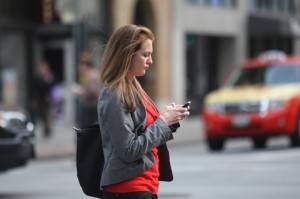We can’t navigate through the informational tsunami that flows over us everyday if we don’t make critical assessments about the reliability of sources.
Since the ancient Greek philosophers, the study of communication has concerned itself with the credibility of sources. Aristotle especially insisted on the importance of only putting faith in people with “good character,” high “ethos,” and personal “virtue.” All were considered critical measures in determining the worth of an individual’s contributions to public discourse. The later Roman rhetorician Quintilian famously described the perfect advocate as a “good person speaking well.”
The idea of rigorous assessment of the potential veracity of a source is critical, not just in legal proceedings, where the stakes are obviously high, but in all walks of life. Making decisions or forming attitudes based on someone else’s word is a survival skill. But in our over-communicated society, qualifying a source of information as “probably” reliable now boils down to little more than liking the source.
Americans seem to lack even the basic skills to make basic estimations of motives that might reveal glaringly obvious biases. I’ve recently heard from individuals who were much too generous in accepting conclusions from questionable advocates, for example: accepting British Petroleum as a decent source for learning about the explosion and oil spill of the Deepwater Horizon in 2010, accepting the word of a National Hockey League doctor on “overblown” stories of head trauma among players, accepting Wal-Mart as a source of reliable “information” on the treatment of their employees. All are examples of misplaced faith in an organization’s ability to tell the truth, even when their own financial interests should make us cautious about accepting their claims.
Consider another example with a different twist. The National Football League has estimated that one in three of their players will have significant cognitive problems due to the bone crushing nature of their work. On first glance, one may assume that the NFL would have an interest in minimizing player head injuries. And if they did, their credibility ought to be called into question. But an astounding projection of one in three players for limitations of “mental function” actually makes their estimate quite credible. That’s a lot of players. They would not have confirmed that rate unless it was probably true. This admission should raise some red flags with anyone connected with the sport.
This general laxity about applying reasonable standards of credibility to the assessment of sources comes at a time when more advertisers seek to embed their marketing campaigns as “sponsored content” on websites. For the advertiser, the idea is to take a soft focus view of a brand within a form that looks like straight journalistic content. So the Washington Post website runs an article entitled “Five Chefs Talk Cheese” sponsored by the “Innovation Center for U.S. Dairy.” To the Post’s credit, they label the content as “sponsored.” But that tag is easy to miss. Desperation to keep news businesses profitable can easily erode the firewall that protects honest journalism from paid flacking. And so we can drift from hard editorial content to “click bait” that looks like news, hardly conscious of whose interests are being served. This risky ignorance of sources is borne out in recent research. Online distractions can short-circuit critical thinking.
The critical point here that is that we cannot navigate through the informational tsunami that flows over us everyday if we don’t make critical assessments about the reliability of sources. Doing anything less is the equivalent of mistaking a desert mirage for a true oasis.


